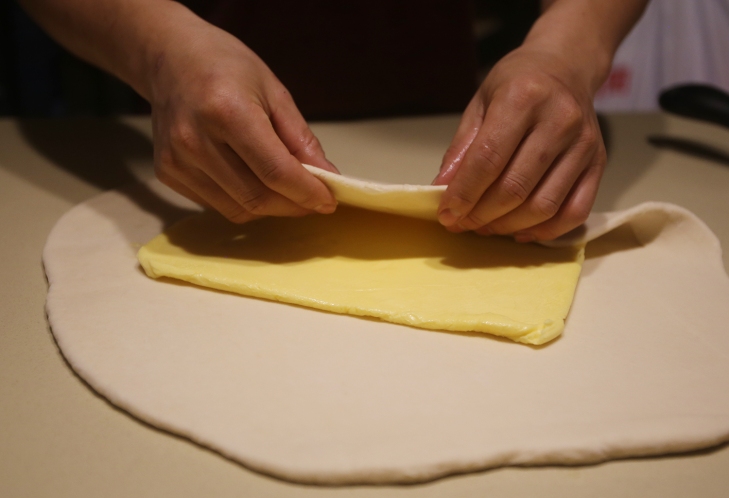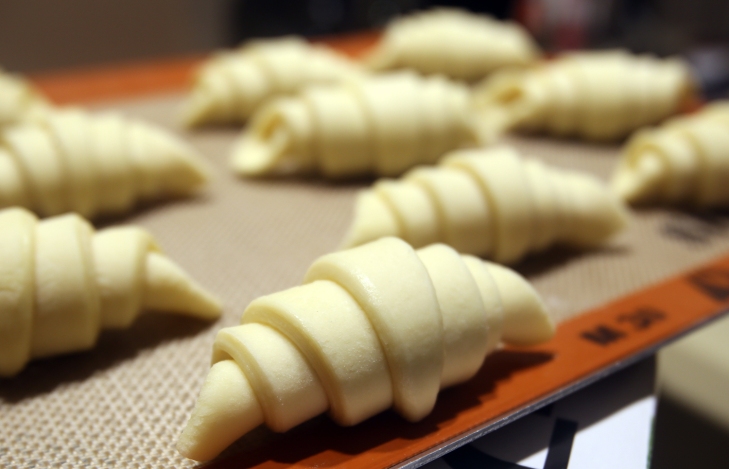Viennoiserie is perhaps the most recognized category of French pastry around the world, thanks to…croissant! That’s why during my courses at Le Cordon Bleu (LCB) in Paris, our group of 10 students, from different countries, was expecting to have a chance to create our very first croissants. Besides baguette – croissant is definitely the most favorite!

We kept doing croissant several times during 3 months and later we still had another class for Danish pastry. Croissant, pain au chocolat, pain au raisin…or all kinds of brioche…are under “Viennoiserie” category. Viennoiserie means “things from Vienna”! But by somehow these creations traditionally associated with France! So what’s is viennoiserie? Traditional viennoiserie are made from white wheat flour with yeast, the yeast helps the quick rise of the dough, creating the perfect flakiness when it’s baked.

This dough is known as a pate viennoise, created by a small bakery in Paris named “Boulangerie Viennoise”, which was opened by an Austrian military official, August Zang, between 1837 and 1839. It wasn’t long until the style of pastry that Zang introduced would become a culinary phenomenon throughout Paris. The pastries may have been invented in Vienna, but they were perfected in Paris.
Today we are doing croissant and some other viennoiserie!
Step 1 Croissant dough preparation
- All purpose flour 500 gr.
- Salt 10 gr.
- Dry yeast 4 gr.
- Sugar 60 gr.
- Butter 50 gr.
- Water 160 ml.
- Milk 100 ml.
- Dry butter for turns (for lamination or turn) 250 gr (or pure butter)
- Dusting flour 50 gr.
By original recipe we can mix two types of flours (50/50) – all purpose (T55) and cake flour (T45), I couldn’t find T45 in our market, we have cake four but not same as T45 in France, so I use only all purpose and it’s ok! First to knead all together , except the butter for lamination, for around 4-5 minutes, until we have a well-combined dough. Cover it with film and keep in the fridge.
Step 2 Butter for lamination
Dry butter is highly recommend for croissant making but it seems not easy to find it in the market, even in Paris, I was told the best way to get dry butter from bakery shops if you happen to know the the owner-bakers. I never tried with margarin.
We put the butter for lamination either in a bag (for alimentation) or parchment paper, leave the butter at room temperature until it’s soft, shape it like a thin paper as below photo. Keep it in the fridge.


Take the croissant dough from the fridge, it should be cold enough to roll it out into a large rectangle, we better take butter for lamination out from the fridge earlier than the dough, the butter should be “less cold and softer” than the dough, it will ease our lamination process. Now enclose the butter inside the dough as above photos.




Don’t forget to dust the working surface and on the dough before roll out…



Roll out the dough into long rectangle (approx. 55-60 cm with the thickness around 0,5-0,6 cm) then do the first fold! After the first fold, turn the dough 90º clockwise as below photo, keep the dough in the fridge for at least 30′ before the second fold (the ideal temperature in the kitchen is around 18-20ºC) and we do totally 5 folds.

After the first fold, we turn the dough 90º clockwise and roll out again for next fold.

Between each fold, we better keep the dough in the fridge for at least 30′, if the kitchen is cold, the resting time in the fridge could be shorter! As said earlier, the ideal temperature in the kitchen when we do croissant lamination is around 18-20ºC, otherwise the butter melts very quickly then we can’t do anything but leave it in the fridge for next action.



After 5 folds, the dough is ready for the final shaping…for sharp cut do keep the dough in fridge.










Baking the viennoiserie at 180ºC then later reduce to 160ºC and but it depends on the oven, for about 30′ or until golden brown.

Thankyoubfornsharing your knowledge. I am kind of wondering wether you have any youtube channel of baking?
I would love to subscribe it.
Merci Beaucoup
LikeLike
Thank you very much for your comment and sorry for my late reply. I have only this blog as my diary, no youtube channel ! Cheers
LikeLike